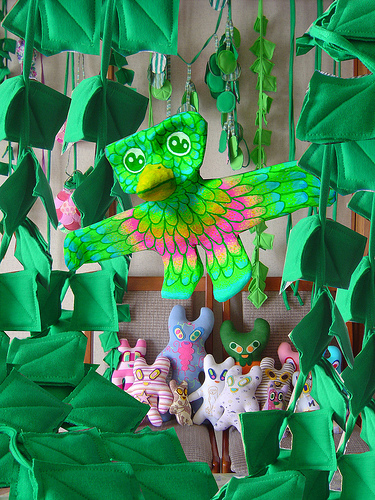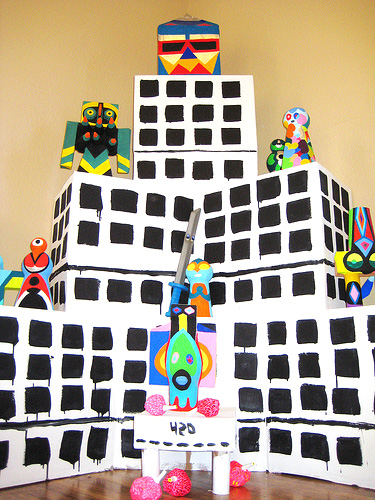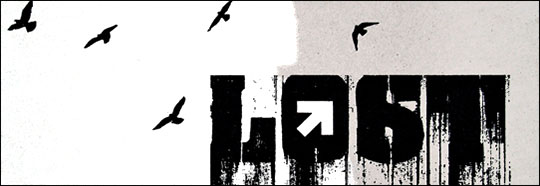
I normally am not a big toy fan, but I do approve of old school-style kaiju. And as far as kaiju go, these Portland/Tokyo guys make some of the most tripped-out, interesting kaiju out there today. I will fully be attending this opening and insist that you do the same!
Tentacles, Horns, and Scales
April 19th Thrash Out in Koenji, Tokyo.
Artshow, toy release, sneak attack.
Featuring all new works by Koji Harmon, Bwana Spoons, and Martin Ontiveros.
Sponsored by Dekline footwear.
Come join us for good times, art, toys, prizes, and a few big suprises.
Thrash Out is the Flagship store and gallery of mind bending vinyl pioneers Gargamel.
Gargamel makes toys that look like Jolly Rancher coated diamonds.
Koji, Bwana, and Martin make art and toys that explode with color, depth, and endless imagination.
Collector and fan Takaomi Fujiki put it best when he said “Happy Beam Discharge!”
For more info as it becomes available, interviews and photos please contact Grass Hut in the U.S. at 503 445 9924 or grasshut.corp@gmail.com
Martin Ontiveros
Martin Ontiveros grew up in San Diego, California. Graduated CalArts in 1996 with a Bachelor’s degree in Experimental Animation. Then he moved here to Portland. He isn’t rich… yet. But he is getting paid to do what he enjoys, and he’s been doing it for years now. He lives in an awesome basement apartment that he shares with his cool son named Felix and two cats not named Felix. His many many years of pop culture emersion and empirical knowledge of useless trivial information have somehow paid off in spades. Call it luck. His work has appeared in publications like Craphound, Juxtapoz, Pencil Fight, The Stranger, Portland Mercury, and Nickolodeon Magazine, as well as awesome books like BEASTS!, The Darkening Garden, Neither Here Nor There (Melvins), Qeedrophonic, Dot Dot Dash and others.
Koji Harmon
Koji Harmon is a zine maker, photographer, and collector. Koji has worked on several projects with Gargamel, and is fast on his way to master sofubi painter. This is koji’s first venture in to toy design.
Bwana Spoons
Bwana Spoons was raised in the woods. He likes moss and Lego and monsters. When he was a little one he would draw detailed crayon renderings of all his favorite Star Wars figures. When he was older he lost them all in a battle with a mildew giant. He likes making zines and comics and paintings and silk-screened prints and designing toys and making things with rainbows and animals. Recently Bwana was bitten by the textile bug. He has designed shoes for Converse, and Dekline, tees for Giant Robot, and MonsieurT., and baby strollers for Bumbleride. Over the years he has worked on and/or created several zines and comics. “Ain’t Nothin’ Like Fuckin’ Moonshine” was the first and longest running; his most recent projects include Pencil Fight, and Soft Smooth Brain, and the upcoming Welcome to Forest Island book designed by Ian Lynam on Top Shelf Books.
Info and directions to Gargamel here.
Tentacles,Horns,and Scales
開催期間:4/19〜4/28(13:00〜20:00)入場無料
*19日は14:00オープンとなります。
会場:Gargamel Flag Store THRASH OUT
See you there!











